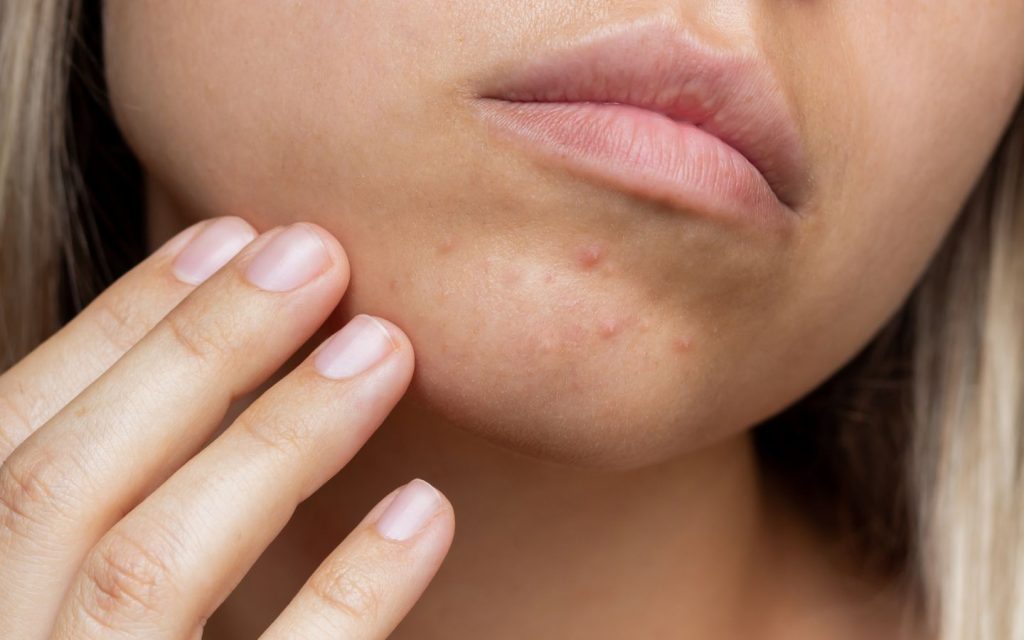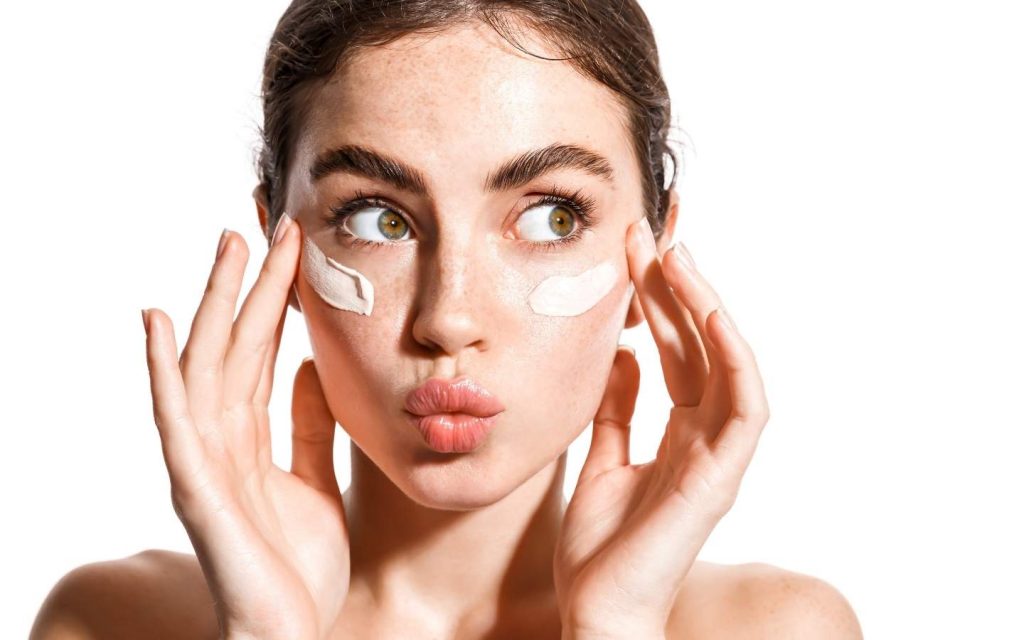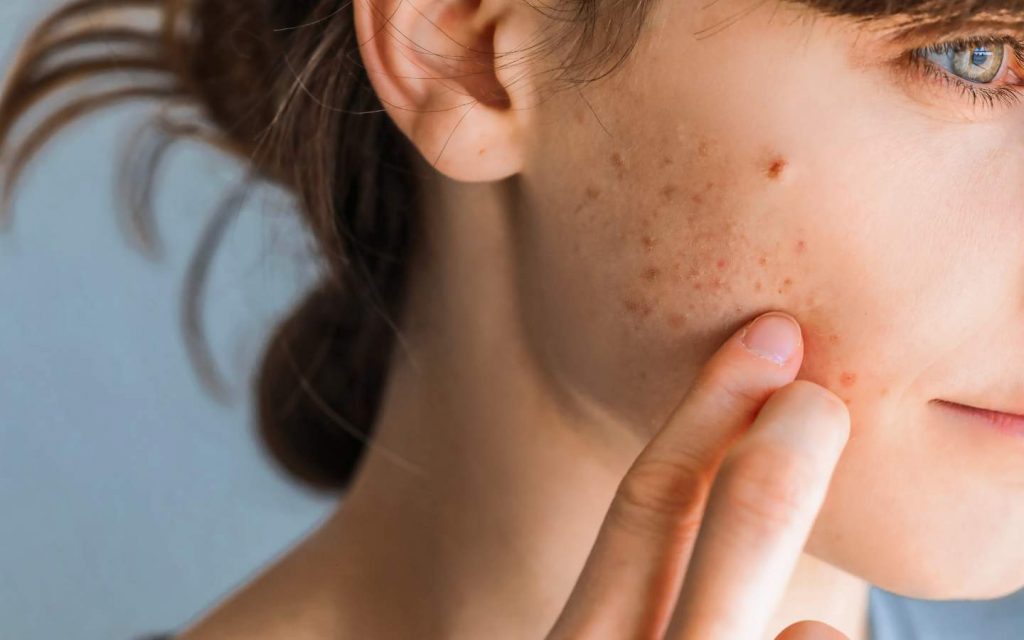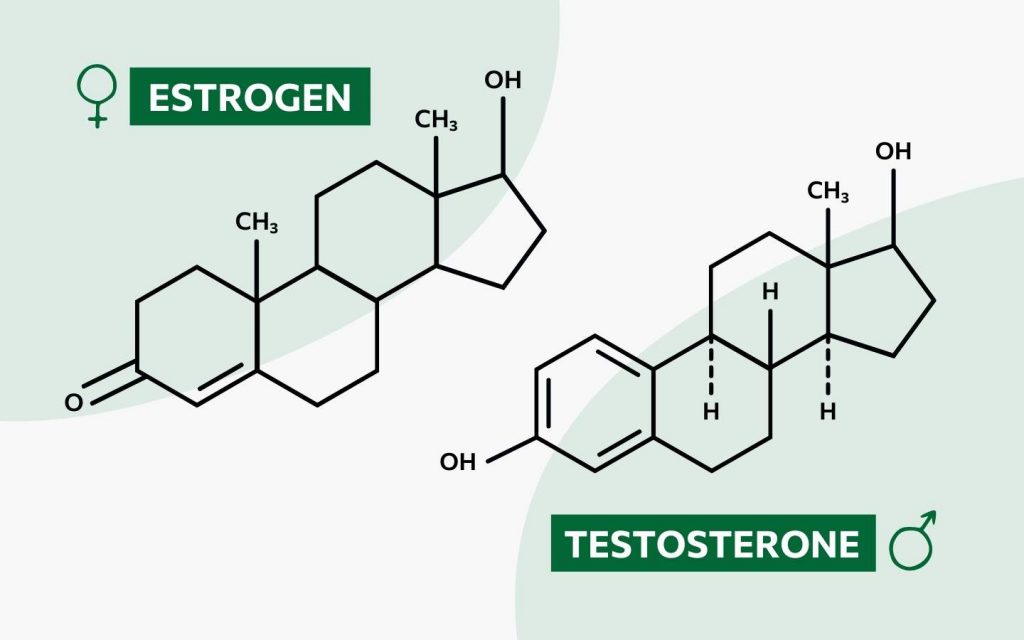
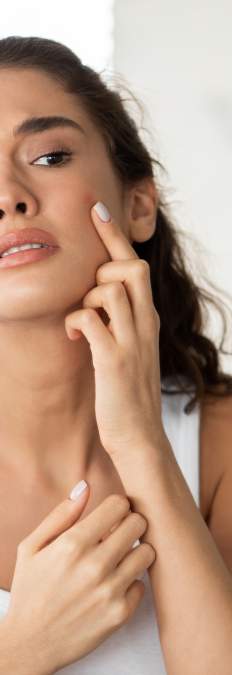
The skin tightens and at the first touch you can already feel a small bump: a pimple is forming. And with it usually comes the need to squeeze the pimple to get rid of it as quickly as possible. But is squeezing it out really always the best and, above all, most effective solution?
Here you can find out when you can squeeze your pimples and when you should leave it alone. And more importantly, we’ll tell you what you need to bear in mind when popping a pimple to avoid worse inflammation or scars.
The question of all questions: To squeeze out pimples or not?
Squeezing pimples often seems like the quickest solution to get rid of blemishes. On the other hand, many people have probably heard the phrase: “You shouldn’t squeeze pimples!” – The truth lies somewhere in between. Whether pimples can be squeezed depends on various factors, such as the extent of the blemish and the type of blemish. There are also a number of risks to be aware of that can occur after the temporary relief of squeezing.
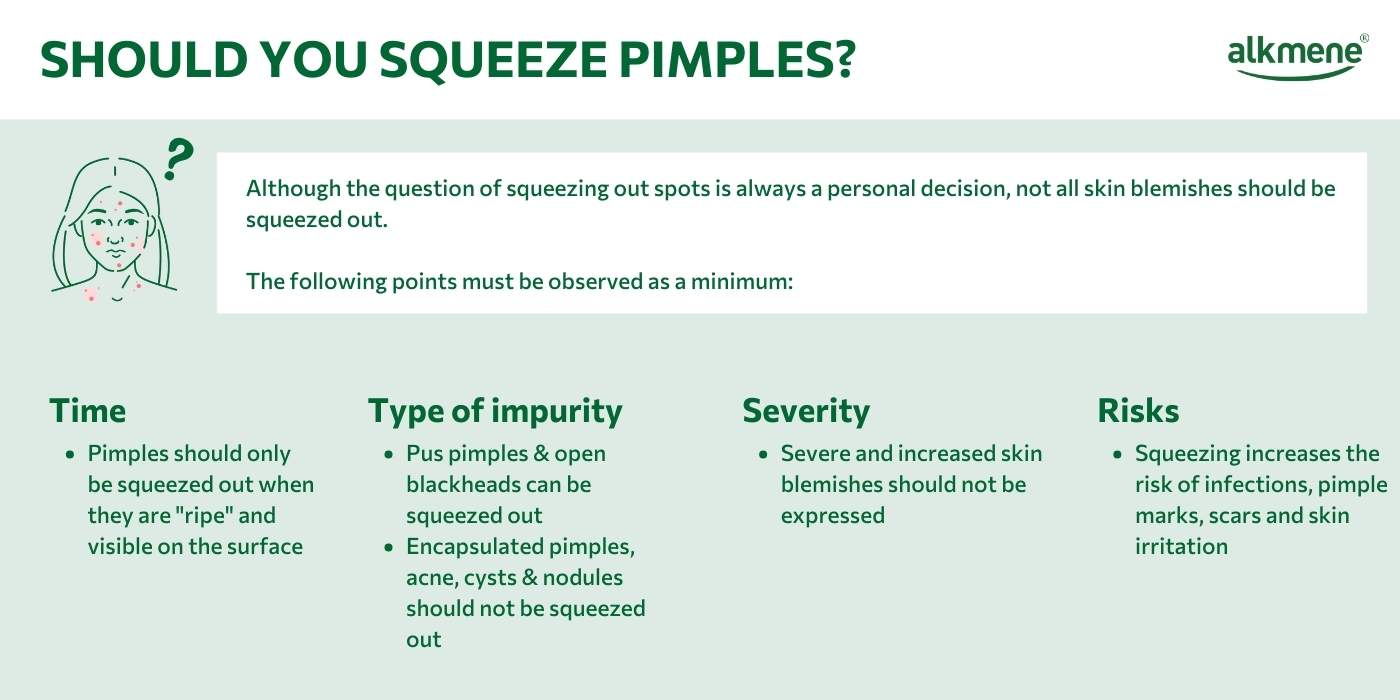
What risks do you need to be aware of when squeezing pimples?
The word “pressure” plays a crucial role here – where pressure and force have to be applied to your own body, pain is often not far away. Although pain is not a risk in itself in the first step, it is a warning signal from our body that we should be careful here. This is because squeezing out inflamed impurities can cause various negative side effects:
By squeezing out pimples, the skin surface of the pimple bursts open so that the accumulation of sebum and pus can be transported out. However, this also creates a small wound in the skin barrier through which bacteria and dirt particles can easily penetrate. Bacteria and dirt from the hands are also spread to other areas of the face.
Dirt and bacteria that get onto the skin by touching the face and blemishes are always a potential source of inflammation. The inflammation of the pimple can be exacerbated by squeezing or new blemishes can develop in this area.
The force used to squeeze out pimples causes the skin to become irritated. This can result in swelling and redness. The skin is stressed and therefore more sensitive.
If the skin is injured and damaged by squeezing, it has to heal again. Scars can occur during this healing process. This is particularly the case with deep-seated, encapsulated pimples, as a lot of force has to be used when squeezing them out and the skin is more severely damaged.
Irritation of the skin when squeezing pimples can lead to increased melanin production. Melanin is a pigment that causes discoloration in our skin, eyes and hair. The increased production of melanin can lead to dark spots and discoloration on the skin – we also know these discolorations as pimple marks.
Our product recommendations for your skin
When can you squeeze pimples?
Many of the risk factors mentioned are largely related to how much force you have to exert when squeezing out blemishes. The more pressure is exerted on the pimples, the greater the likelihood of skin irritation and swelling, for example. It is therefore also crucial when you squeeze out a pimple.
It is important to wait until the pimple is “ripe”. This means that the pimple is visible on the surface of the skin and already has a white or yellowish dot in the center. At this stage, there is no longer a thick skin barrier to break through, which means that less force is required to squeeze it out.
It also depends on the severity of the blemishes. If the blemishes are more severe or more frequent, you should not apply additional pressure to your skin. In the case of more severe acne, you should always consult a dermatologist – in this case, self-treatment by squeezing is not beneficial, but harmful.
Which impurities can be squeezed out?
The type of blemish is also crucial, as squeezing is not recommended for all types of blemishes.
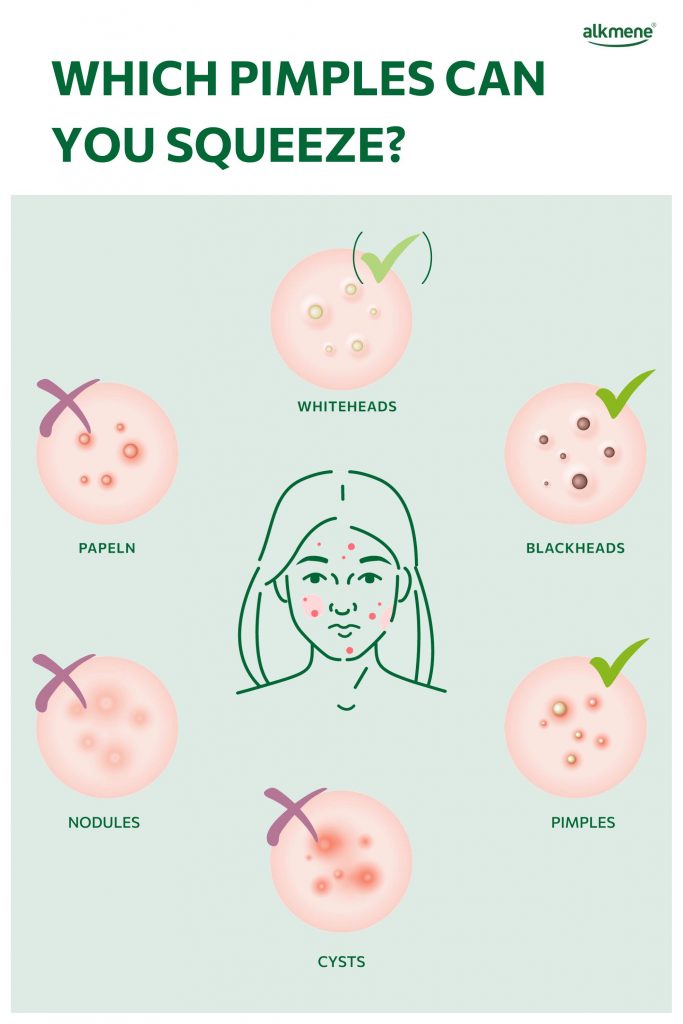
1. squeeze out pustules
Pus pimples are inflamed pustules where pus has formed in the hair canal. If this skin impurity is a mature pimple on the surface of the skin, it can be carefully squeezed out.
2. squeeze out an encapsulated (subterranean) pimple
This type of pimple usually occurs in the lower layers of the skin and can only be felt as a slight elevation with the finger. Even if the underlayers can be very painful, you should refrain from applying pressure to remove them. This would damage the skin too much. Inflammation and scars are likely to result.
3. squeeze out blackheads
Open blackheads are often visible as black dots on the surface of the skin. They can be removed by applying a little pressure. However, this is not recommended – masks or peelings such as our 3in1 peeling – mask – cleansing can provide better relief.
4. squeeze out closed blackheads
Closed blackheads, also known as whiteheads, lie under the skin and have a closed pore. They are therefore more difficult to squeeze out and must be treated with particular care. If too much pressure has to be applied, other treatment options should be used.
5. squeeze out acne pimples, cysts and nodules
In the case of severe forms of blemishes, pressure should never be exerted on the stressed and inflamed skin – these types of blemishes should not be squeezed out. The risks of aggravation outweigh the benefits.
Squeeze pimples correctly: avoid inflammation and scars
The technique and the use of clean hands and tools are crucial for the correct squeezing of pimples. To minimize the risk of inflammation and scars, there are a few things you should keep in mind:
1. cleaning
The first step is always to wash your hands thoroughly so that as few bacteria and dirt particles as possible get onto the skin. The face should also be cleaned beforehand with a mild cleanser to remove dirt, oil or make-up from the skin. You can use our deep cleansing facial wash for this, which also has an antibacterial effect thanks to the tea tree oil it contains.
2. steam bath
Optionally, you can take a steam bath before squeezing out the pimple to open the pores. This can help to make the pimple easier to squeeze out afterwards.
3. squeeze out carefully
When squeezing out impurities, make sure that pressure is applied evenly and gently from both sides. If the skin resistance is too high or painful, you should stop. In this case, the pimple is not yet ripe or another treatment is more suitable.
4. aftercare
After squeezing out the pimple, you should clean the affected area again to reduce the risk of infection. It is best to use a product that has a disinfectant effect. Our Skin Clarifying Facial Toner has an antibacterial and anti-inflammatory effect with its combination of tea tree oil and zinc PCA. The skin should also be well moisturized over the following days to reduce the risk of scarring.

Important: Despite the correct and clean procedure, not all risks can be ruled out. There is always a risk that the condition of the blemish will worsen as a result of squeezing.
What to do if you can't squeeze out pimples?
Not all pimples can and should be squeezed out. In many cases, a gentler treatment of the blemishes is more suitable. Although this usually requires a little patience, the risks are significantly lower.
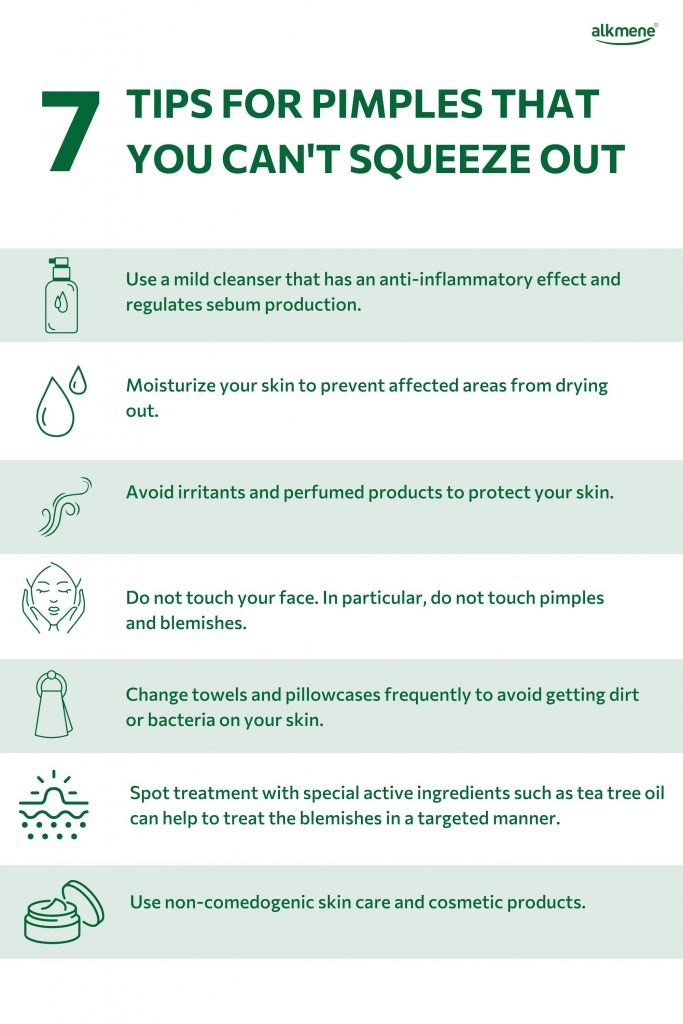
If a pimple cannot be squeezed out, treatment with anti-inflammatory creams, for example, can help. The skin should also be sufficiently moisturized to prevent it from drying out. With our Skin Refining Face Cream, you can check off both points with one product. It moisturizes the skin and has an anti-inflammatory effect thanks to the tea tree oil it contains. You should also avoid touching the inflamed area or touching your face to minimize contact with bacteria and protection. You should also avoid using strong cleansers or highly perfumed products.

TIP: Quick help against pimples can also be achieved with spot treatments. This involves treating the pimple with a specific product or active ingredient to accelerate healing. Products such as the anti-blemish-stick not only combat blemishes, but are also perfect for quick and easy treatment on the go.
